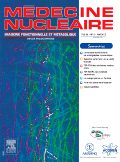
Medecine Nucleaire-Imagerie Fonctionnelle et Metabolique
Scope & Guideline
Illuminating the Path of Functional Imaging.
Introduction
Aims and Scopes
- Nuclear Medicine Applications:
The journal covers a wide range of applications of nuclear medicine, including diagnostics, therapeutic interventions, and the development of new radiopharmaceuticals. It emphasizes the use of imaging techniques such as PET, SPECT, and CT in the management of various diseases. - Functional Imaging Techniques:
A significant focus is placed on advanced imaging modalities and their role in assessing metabolic and physiological processes in diseases, especially cancer. The integration of functional imaging with anatomical imaging enhances the accuracy of diagnosis and treatment evaluation. - Theranostics and Personalized Medicine:
The journal explores the concept of theranostics, which combines therapeutic and diagnostic approaches, particularly in oncology. This involves the use of targeted radionuclide therapies and personalized treatment plans based on imaging findings. - Emerging Technologies in Imaging:
Research on novel imaging techniques and technologies, such as digital PET and radiomics, is a core area of interest. The journal discusses advancements that improve imaging quality, quantification, and the ability to predict treatment responses. - Clinical Case Studies and Guidelines:
The publication includes detailed case studies and clinical practice guidelines that contribute to the understanding of best practices in nuclear medicine and imaging, aiding clinicians in decision-making.
Trending and Emerging
- Oncological Imaging Innovations:
Recent papers show a marked increase in research related to oncological imaging, particularly the use of PET/CT and PET/MR in cancer diagnosis, staging, and treatment response evaluation. This trend highlights the importance of accurate imaging in managing cancer patients. - Theranostic Approaches in Cancer Treatment:
Emerging themes include the use of theranostic approaches, particularly with PSMA-targeted therapies for prostate cancer. This reflects a broader trend towards combining diagnostics and therapeutics to provide personalized cancer care. - Advanced Imaging Techniques and Radiomics:
There is a growing interest in advanced imaging techniques and radiomics, which analyze imaging data to predict treatment responses and outcomes. This trend indicates a shift towards quantitative imaging and machine learning applications in nuclear medicine. - Imaging Biomarkers and Prognostic Indicators:
Recent studies are increasingly focusing on the correlation between imaging biomarkers and clinical outcomes, emphasizing the role of imaging in risk stratification and treatment planning. - Integration of AI and Machine Learning in Imaging:
The inclusion of artificial intelligence and machine learning in imaging analysis is gaining traction, suggesting a future direction where computational methods enhance diagnostic accuracy and efficiency in nuclear medicine.
Declining or Waning
- Traditional Imaging Techniques:
There is a noticeable decline in the focus on traditional imaging techniques that do not incorporate the advancements of hybrid imaging modalities such as PET/CT or PET/MR. Research in this area has been overshadowed by the increasing relevance of integrated imaging approaches. - General Nuclear Medicine Procedures:
Publications that discuss general nuclear medicine procedures without specific applications or innovative methodologies have decreased. This suggests a shift towards more specialized and targeted research. - Basic Research on Radiopharmaceuticals:
While the development of new radiopharmaceuticals remains important, there has been a reduction in basic research papers focused solely on radiopharmaceutical chemistry, as the journal favors studies that demonstrate clinical application and efficacy. - Non-Oncological Applications:
The focus on non-oncological applications of nuclear medicine, such as cardiology or endocrinology, appears to be waning. The journal is increasingly centered on oncology, particularly in the context of personalized treatment and imaging.
Similar Journals

NUCLEAR MEDICINE REVIEW
Championing Excellence in Radiology ResearchNUCLEAR MEDICINE REVIEW is a distinguished journal in the field of radiology, nuclear medicine, and imaging, published by VIA MEDICA in Poland. Since its transition to an open access format in 1999, this journal has been dedicated to promoting the dissemination of knowledge and research findings across a global audience. With a focus on innovative approaches and advancements in nuclear medicine, it aims to serve as a key resource for researchers, professionals, and students who are working to further the understanding of nuclear imaging and its applications. In 2023, the journal was classified in the Q3 category within Radiology, Nuclear Medicine and Imaging, and Q4 in the broader category of Medicine (miscellaneous), highlighting its growing reputation in the academic community. As of the latest assessments, the journal has been ranked #235 out of 333 in its field according to Scopus metrics, reflecting its commitment to excellence and the relevance of its published works. The NUCLEAR MEDICINE REVIEW is a pivotal platform for those engaged in cutting-edge research, providing insights that drive the evolution of medical imaging and therapeutic techniques.
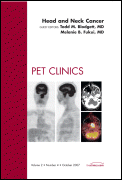
PET Clinics
Advancing the Frontiers of PET Imaging.PET Clinics, published by Elsevier Inc, is a premier academic journal focusing on the advancements and applications of Positron Emission Tomography (PET) in various medical fields. With its ISSN 1556-8598 and E-ISSN 1559-7814, the journal has established a strong reputation in the scientific community, reflected in its impressive Q1 quartile rankings in Medicine (miscellaneous), Radiation, and Radiology, Nuclear Medicine, and Imaging for 2023. The journal operates within a well-defined scope that bridges innovative research and practical clinical applications, targeting professionals, researchers, and students keen on the intersection of nuclear medicine and imaging technologies. Although not an open-access journal, PET Clinics ensures accessibility through institutional subscriptions, making valuable insights available to the academic community. With an emphasis on enhancing patient care and treatment outcomes through cutting-edge imaging techniques, this journal serves as an essential resource for those seeking to expand their knowledge and expertise in the rapidly evolving field of PET.

Imaging
Illuminating Innovations in Imaging TechniquesImaging, published by AKADEMIAI KIADO ZRT, is an esteemed open-access journal dedicated to the field of medical imaging, established in 2020. With an E-ISSN of 2732-0960 and based in Budapest, Hungary, this journal provides a vital platform for the dissemination of cutting-edge research and advancements in imaging techniques, especially in the realms of radiology, nuclear medicine, and ultrasound technology. While currently positioned in the Q4 category across multiple medical specialties, the journal continues to strive for improvements in visibility and impact, contributing to the evolving discourse in medical imaging. The journal aims to facilitate an inclusive and collaborative environment for researchers, professionals, and students, inviting them to share their findings and insights to enhance the field's development. With open-access availability since its inception, Imaging ensures free and easy access to its content, fostering a greater understanding and appreciation of innovative imaging practices worldwide.
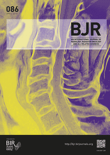
BRITISH JOURNAL OF RADIOLOGY
Pioneering Research for the Future of ImagingBritish Journal of Radiology is a leading peer-reviewed journal published by the British Institute of Radiology, dedicated to advancing the field of radiology, nuclear medicine, and imaging. With a prestigious history dating back to 1945, this journal is at the forefront of disseminating cutting-edge research and innovations that significantly impact clinical practice. Currently enjoying a Q1 ranking in the field of radiology and Q2 in general medicine for 2023, it is recognized for its rigorous standards and high-quality content, ranking #87 out of 333 in Scopus for specialties related to Medicine, Radiology, Nuclear Medicine, and Imaging, placing it in the 74th percentile. Researchers, professionals, and students are encouraged to engage with the latest findings and comprehensive reviews presented within its pages, which contribute not only to academic discourse but also to the evolution of practice in the wider medical community.

EUROPEAN RADIOLOGY
Pioneering Research in Radiology and Nuclear MedicineEUROPEAN RADIOLOGY, published by SPRINGER, stands as a prestigious international journal in the field of radiology, nuclear medicine, and imaging, with an impressive impact factor that underscores its significance among peers. With an ISSN of 0938-7994 and an E-ISSN of 1432-1084, this journal provides a platform for cutting-edge research and advancements in medical imaging from 1991 to 2024. Recognized as a Q1 journal in both general Medicine and the specialized Radiology category by 2023, EUROPEAN RADIOLOGY ranks an impressive #17 out of 333 in its field according to Scopus, placing it in the 95th percentile. While it does not currently offer Open Access options, the journal remains essential reading for researchers, professionals, and students striving to stay at the forefront of developments in diagnostic imaging and related technologies. By contributing to a comprehensive understanding of radiological practices, EUROPEAN RADIOLOGY plays a crucial role in shaping the future of medical diagnosis and patient care.
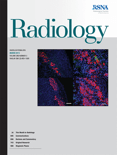
RADIOLOGY
Connecting researchers and practitioners in radiology.RADIOLOGY, published by the Radiological Society of North America (RSNA), stands as a premier journal in the fields of radiology, nuclear medicine, and imaging. Established in 1945, this esteemed journal has consistently provided groundbreaking research and insights, helping to shape advancements in diagnostic imaging and therapeutic interventions. With a commendable Q1 ranking in its category and a remarkable 99th percentile ranking in Scopus, RADIOLOGY continues to be a pivotal resource for clinicians, researchers, and students alike. Although not an Open Access journal, it offers a wealth of high-quality peer-reviewed articles that contribute significantly to the ongoing discourse in the medical community. With a strong focus on innovative techniques and the integration of new technologies, RADIOLOGY remains essential for professionals aiming to stay at the forefront of medical imaging practices.
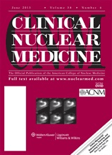
CLINICAL NUCLEAR MEDICINE
Transforming Insights into Impactful PracticesCLINICAL NUCLEAR MEDICINE is a premier journal dedicated to the field of nuclear medicine, published by Lippincott Williams & Wilkins. With a history of excellence since its inception in 1978, the journal serves as a vital resource for researchers, healthcare professionals, and students seeking to deepen their understanding of this rapidly evolving discipline. The journal holds a commendable Q2 ranking in both Medicine (miscellaneous) and Radiology, Nuclear Medicine and Imaging, reflecting its significant impact on advancing clinical practices and research. While currently not offered as an open-access publication, CLINICAL NUCLEAR MEDICINE ensures rigorous peer review and high-quality publications, contributing to the broad dissemination of cutting-edge studies and reviews. With its comprehensive scope encompassing both diagnostic and therapeutic nuclear medicine applications, researchers around the globe turn to this journal to stay informed and inspire innovations in patient care for the years leading up to 2024 and beyond.
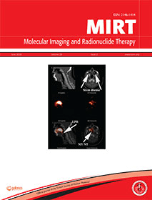
Molecular Imaging and Radionuclide Therapy
Pioneering discoveries in the realm of nuclear medicine.Molecular Imaging and Radionuclide Therapy is an esteemed academic journal published by GALENOS PUBL HOUSE, dedicated to advancing the fields of radiology, nuclear medicine, and imaging. Since its inception, this Open Access journal has facilitated the dissemination of high-quality research and innovative practices in molecular imaging and radionuclide therapy, making it a vital resource for researchers, professionals, and students alike. With an ISSN of 2146-1414 and an E-ISSN of 2147-1959, the journal has established its presence globally while specifically catering to the Turkish academic and medical community. As of 2023, it is ranked #241/333 in the Radiology, Nuclear Medicine and Imaging category on Scopus, holding a respectable Q3 quartile ranking. The journal serves as a platform for sharing impactful findings from 2017 to 2024, reinforcing its commitment to open access since 2011. With a dedication to enhancing the knowledge base in molecular imaging and therapy, it remains an important conduit for scholarly communication and collaborative research developments in this dynamic field.

QUARTERLY JOURNAL OF NUCLEAR MEDICINE AND MOLECULAR IMAGING
Pioneering Insights into the Future of Medical Imaging.The Quarterly Journal of Nuclear Medicine and Molecular Imaging, published by Edizioni Minerva Medica in Italy, serves as a pivotal platform for researchers and practitioners in the fields of Nuclear Medicine and Molecular Imaging. With an ISSN of 1824-4785 and an E-ISSN of 1827-1936, this journal boasts a respectable impact factor and is positioned in the Q3 quartile of the Radiology, Nuclear Medicine and Imaging category, based on the latest 2023 evaluations. As the journal continues to converge from its inception in 2004 to its anticipated expansions through 2024, it aims to disseminate high-quality, peer-reviewed articles that advance the frontier of imaging technologies and their applications in clinical practice. Researchers, professionals, and students are encouraged to contribute to its diverse scope, which encompasses innovative research, clinical findings, and reviews that encapsulate cutting-edge advancements in the field, highlighting its importance as an essential resource for knowledge and collaboration.
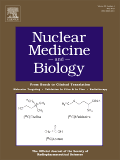
NUCLEAR MEDICINE AND BIOLOGY
Transforming the landscape of nuclear medicine through rigorous research.NUCLEAR MEDICINE AND BIOLOGY, published by Elsevier Science Inc, is a premier journal dedicated to advancing the fields of nuclear medicine and molecular biology. Since its inception in 1986, this journal has served as a vital platform for the dissemination of high-quality research, with a clear focus on the innovative applications of nuclear techniques in biological settings. It is categorized in the Q3 tier for both Cancer Research and Molecular Medicine, and Q2 for Radiology, Nuclear Medicine and Imaging, highlighting its significant standing within these disciplines. The journal's Scopus rankings reflect its strong impact, placing it in the top quartile of its categories, particularly in Radiology, Nuclear Medicine, and Imaging. Researchers, professionals, and students alike will find this an invaluable resource for contemporary research findings and methodologies in nuclear medicine and its biological applications. Access to the journal is provided through subscription, ensuring that quality content remains available to its wide-ranging audience.